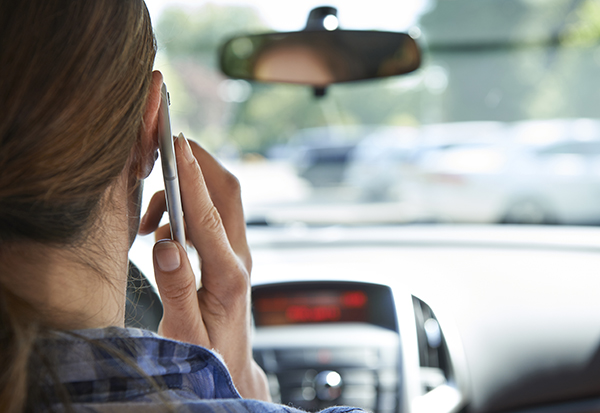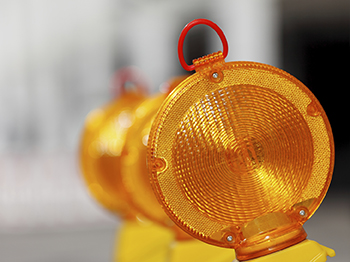In a Work Zone? Hang Up the Phone

Cell phones are everywhere – including on the highways. How many times have you seen someone driving along, gabbing on the phone? How many times have you done it yourself?
It’s convenient to be able to stay in touch with anyone, anytime. But when you’re driving, it’s not safe.
Back in 2014 the National Safety Council estimated that cell phone use is involved in 26 percent of all motor vehicle crashes. Mobile devices continue to be a leading cause of distracted driving throughout the United States.
What is distracted driving? According to Distraction.gov, it’s “any activity that could divert a person’s attention away from the primary task of driving.” That can be anything from changing the radio station to texting a friend. Add in a construction zone, and any distraction can be even more deadly.
States and other government entities are taking action to force drivers to focus on their driving. On October 1 the state of Wisconsin made it illegal to talk on a handheld mobile device while driving in a Wisconsin road work zone. According to the Wisconsin Department of Transportation, the new law is aimed at helping to ensure that drivers are giving as much of their attention as possible to the road.
Major road construction areas are easily identified as work zones. But the DOT reminds drivers that emergency vehicles on the side of the road, a snowplow flashing its warning lights, and an everyday garbage pickup are all considered work zones.
 Conditions can change quickly in a construction zone. Equipment and workers are always moving and working with large equipment, sometimes in small spaces. Driving in a construction zone is challenging enough without the added distractions of talking on a cell phone – or reading, eating, shaving, putting on makeup, or the myriad other not-safe-for-driving activities that motorists think they can do as they zoom down the highway. Every road construction worker has stories of close calls on the work site.
Conditions can change quickly in a construction zone. Equipment and workers are always moving and working with large equipment, sometimes in small spaces. Driving in a construction zone is challenging enough without the added distractions of talking on a cell phone – or reading, eating, shaving, putting on makeup, or the myriad other not-safe-for-driving activities that motorists think they can do as they zoom down the highway. Every road construction worker has stories of close calls on the work site.
A number of other states have even more restrictions on mobile device use by drivers:
- 14 states and the District of Columbia ban talking on a hand-held cell phone while driving.
- 37 states and the District of Columbia restrict the use of all cell phones by novice drivers.
- 46 states and the District of Columbia ban text messaging for all drivers, and Missouri and Texas ban novice drivers from texting.
And while hands-free devices are often granted exemptions, be aware that while these devices may help you keep your eyes on the road, they do not prevent you from taking your mind off the road.
A white paper on “Understanding the Distracted Brain” by the National Safety Council notes that hands-free devices eliminate two types of risks – visual (taking your eyes off the road) and manual (removing your hands from the steering wheel). But they don’t eliminate a third type of distraction – cognitive, or taking your mind off the road.
The NSC explains this as “inattention blindness,” where drivers using any type of cell phone “look at” but don’t truly “see” objects: “They are looking out the windshield but do not process everything in the roadway environment necessary to effectively monitor their surroundings, seek and identify potential hazards, and respond to unexpected situations. Their field of view narrows.”
Be safe: Turn your cell phone off when you turn the ignition on.

Post a comment: